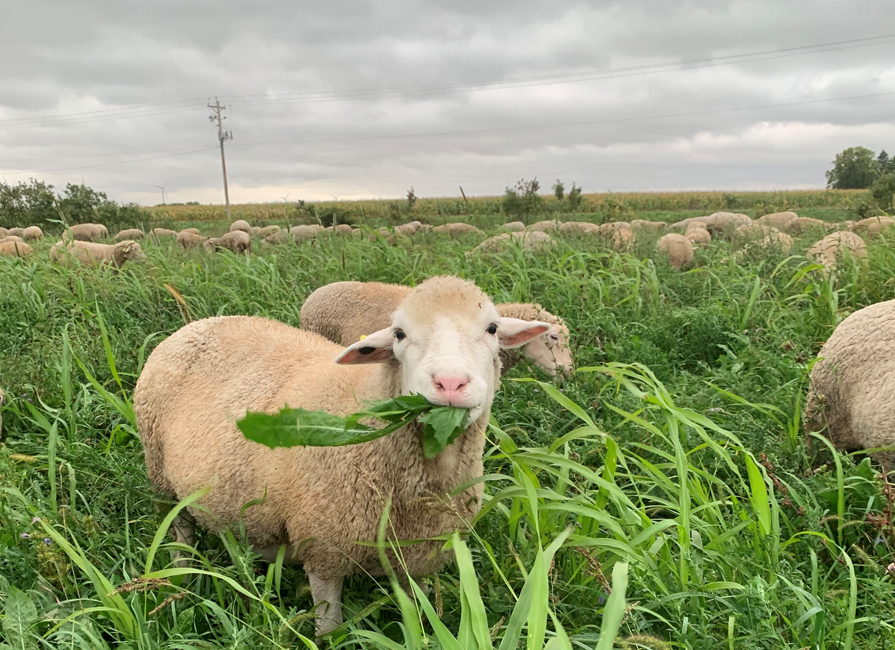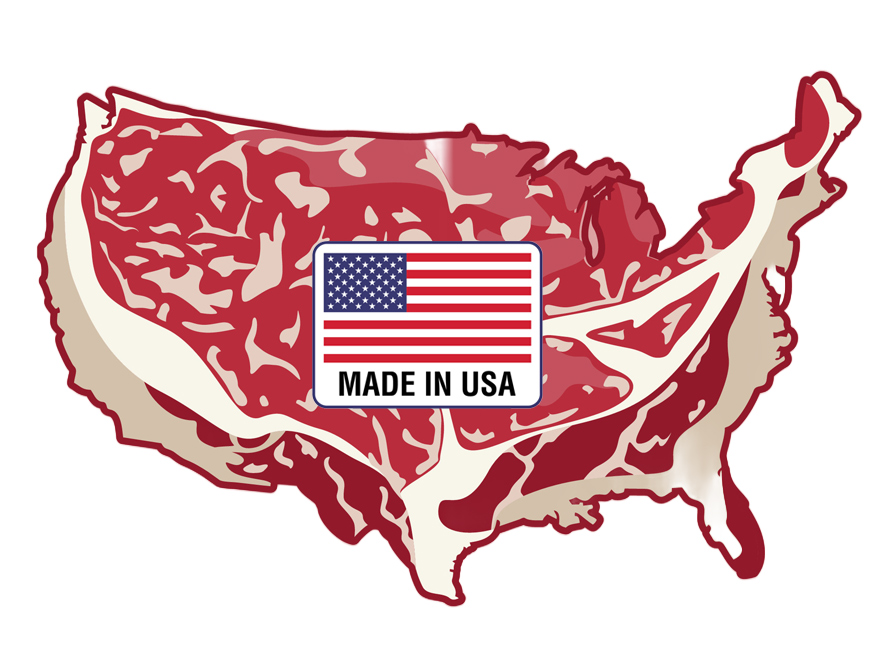“Whatever it takes, doc … just no antibiotics.” I heard these words frequently from organic…
Greening our Food Deserts from the Ground Up
 One of the things I love most about my job as program director at Animal Welfare Approved is that I get to meet people who are literally changing the world from the ground up. Ron Finley is the perfect example, except that he’s not the typical farmer or rancher whom I usually meet. He grows fruit and vegetables on an urban community garden: a 10ft by 150ft strip of land between the sidewalk and the curb in front of his house in Crenshaw, south central Los Angeles.
One of the things I love most about my job as program director at Animal Welfare Approved is that I get to meet people who are literally changing the world from the ground up. Ron Finley is the perfect example, except that he’s not the typical farmer or rancher whom I usually meet. He grows fruit and vegetables on an urban community garden: a 10ft by 150ft strip of land between the sidewalk and the curb in front of his house in Crenshaw, south central Los Angeles.
I bumped into Finley at the recent Good Food Festival in Santa Monica, CA. We got talking and he told me about his recent successful fight with city bureaucrats over his community garden and the grassroots initiative he’s set up to help urban communities to grow healthy, organic food for themselves. From the outset I liked the man, and we were clearly fighting the same fight, just on very different fronts. His story was as inspirational as anything I had seen or heard before.
Finley is a fashion designer by trade. He’s also a keen gardener: “It’s just something I’ve always done,” he explains. “It’s kind of spiritual, putting something in the ground and watching it grow.”
After attending a local gardening class run by Florence Nishida in 2010, where he first heard about edible gardens being set up in urban areas devoid of nature and fresh fruit and vegetables, Finley was inspired to do something in his own neighborhood. Hooking up with Nishida and a few other friends, he established LA Green Grounds, a grassroots initiative that seeks to help communities to set up productive gardens. As Finley explains, South Los Angeles is recognized by the USDA as a so-called ‘food desert,’ where fresh, healthy and affordable food is in very short supply: “LA Green Grounds was an attempt to change this from the ground up, to provide fresh fruits and vegetables for local people and to reconnect them with their food and how it’s grown.”
The idea is that LA Green Grounds helps people who want to set up a community edible garden but don’t know how: “We turn up with basic tools and a bunch of plants and teach people how to grow their own organic fruits, vegetables and herbs right in their own backyard.” So how does it work? “First, we establish whether or not the area is a viable plot for growing and if there is sufficient local support to make it happen. If it’s looking good, we work with the community to draw up a garden plan. Then, we plan a community ‘Dig In’ where friends and neighbors come together to create their garden. We teach them how to maintain it, even how to make compost. It’s all about instruction, demonstration and participation.”
LA Green Grounds brings along basic gardening equipment, and supply the compost, seedlings and plants for free. “All we ask in return is for those who we’ve supported to help at a future Dig In for another area,” Finley says. The LA Ground Website keeps folk informed of the location and date for future Dig Ins, and interest is growing all the time.
But it’s not just about growing healthy, affordable food for those who need it most. LA Green Grounds is using gardening to help rebuild communities in some of LA’s most deprived areas: “It’s remarkable how community gardening can bring about real change in neighborhoods. People turn up for some fresh food, or at the Dig Ins, and just start talking. And it always amazes me how planting a bunch of seeds or plants really can change someone’s life as they watch it grow, and then harvest it. I’ve seen people light up and literally change before my eyes.”
So what about the conflict with city officials? Well, after setting up LA Green Grounds, one of the first things Finley did was to convert his front yard into a community vegetable patch back in the fall of 2010. By spring 2011, he was growing tomatoes, peppers, squash, onions, eggplant, and more in this urban garden for himself and local residents. So what’s the big deal, you might ask?
Well, the problem was that this ‘garden’ was actually a 10ft by 150ft strip of land between the sidewalk and curb in front of his house – a so-called parkway. This land was not ‘his’ to cultivate; parkways are all managed by the city’s Bureau of Street Services, and converting it from lifeless scrub to a productive urban garden without permission was against the city rules. Finley was told he had to cut it down or apply for a $400 permit. But even with a permit the garden’s future looked in doubt, as the rules specified the maximum height (no more than 36 inches) and type of plants he could grow. “In an area so devoid of nature and healthy food it just seemed crazy that we couldn’t grow fresh fruit and vegetables,” Finley says. “They were happy for people to waste water on scrub, yet we could not use the land to grow food for people.”
So Finley and LA Green Grounds decided to challenge the rules. With a hearing set for the end of August, Finley set up a local petition to muster support for the garden, and soon gained almost 1,000 signatures. Once the community began to mobilize, the media began to take note. And it wasn’t long before local politicians also saw the light. At the end of August, Los Angeles officials announced that they had cancelled Ron Finley’s hearing and that he could keep growing. And according to a recent piece in the LA Times, local councilor Herb Wesson is now calling for changes in the rules so that urban gardeners can legally grow food on parkways and potentially other city-owned vacant areas. As Finley says, “We’re just trying to show people what can be done, just what is possible.”
An inspiration to all, Ron Finley is a true urban farming hero.
Find out more about LA Green Grounds at www.lagreengrounds.org.



